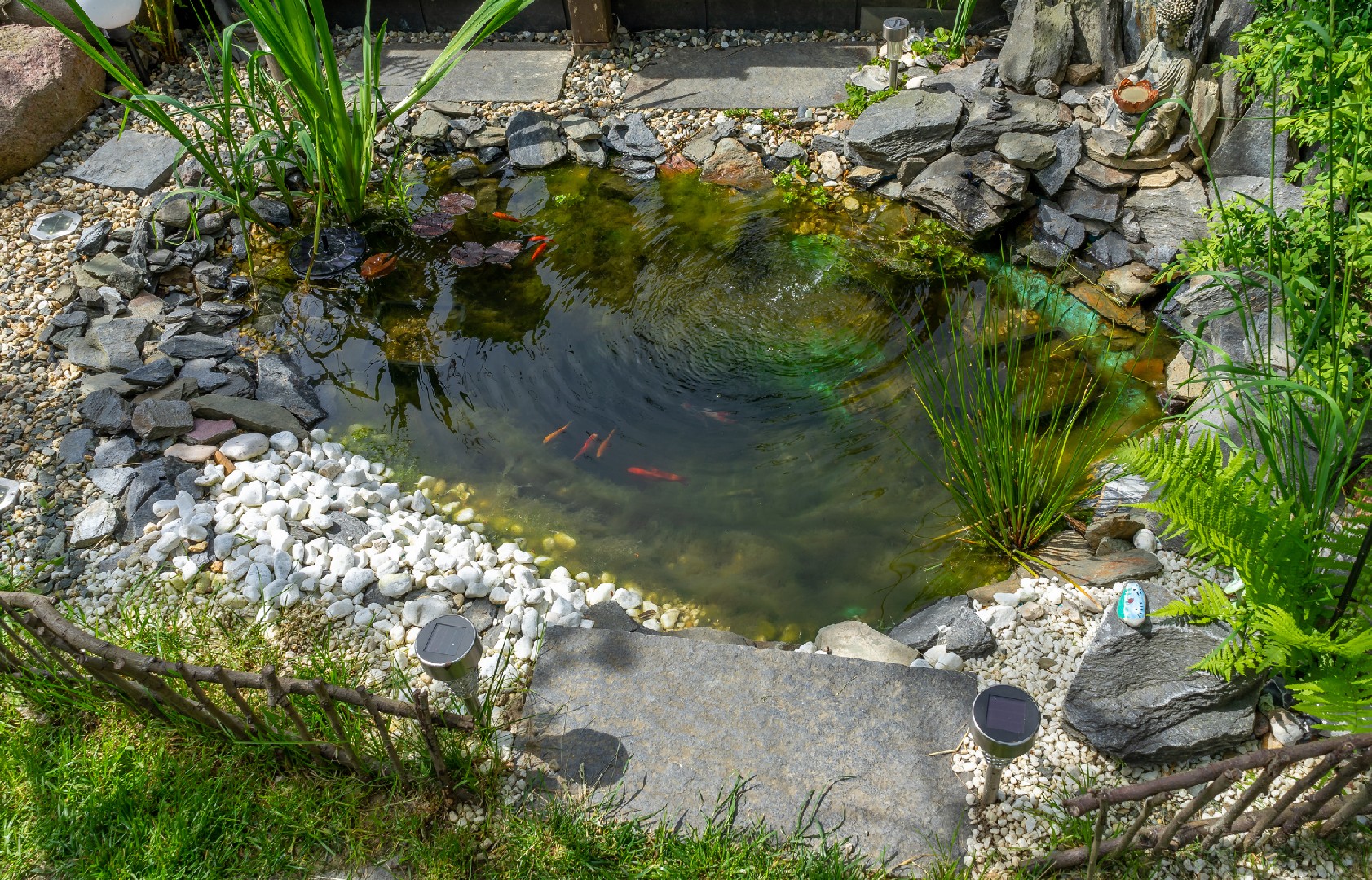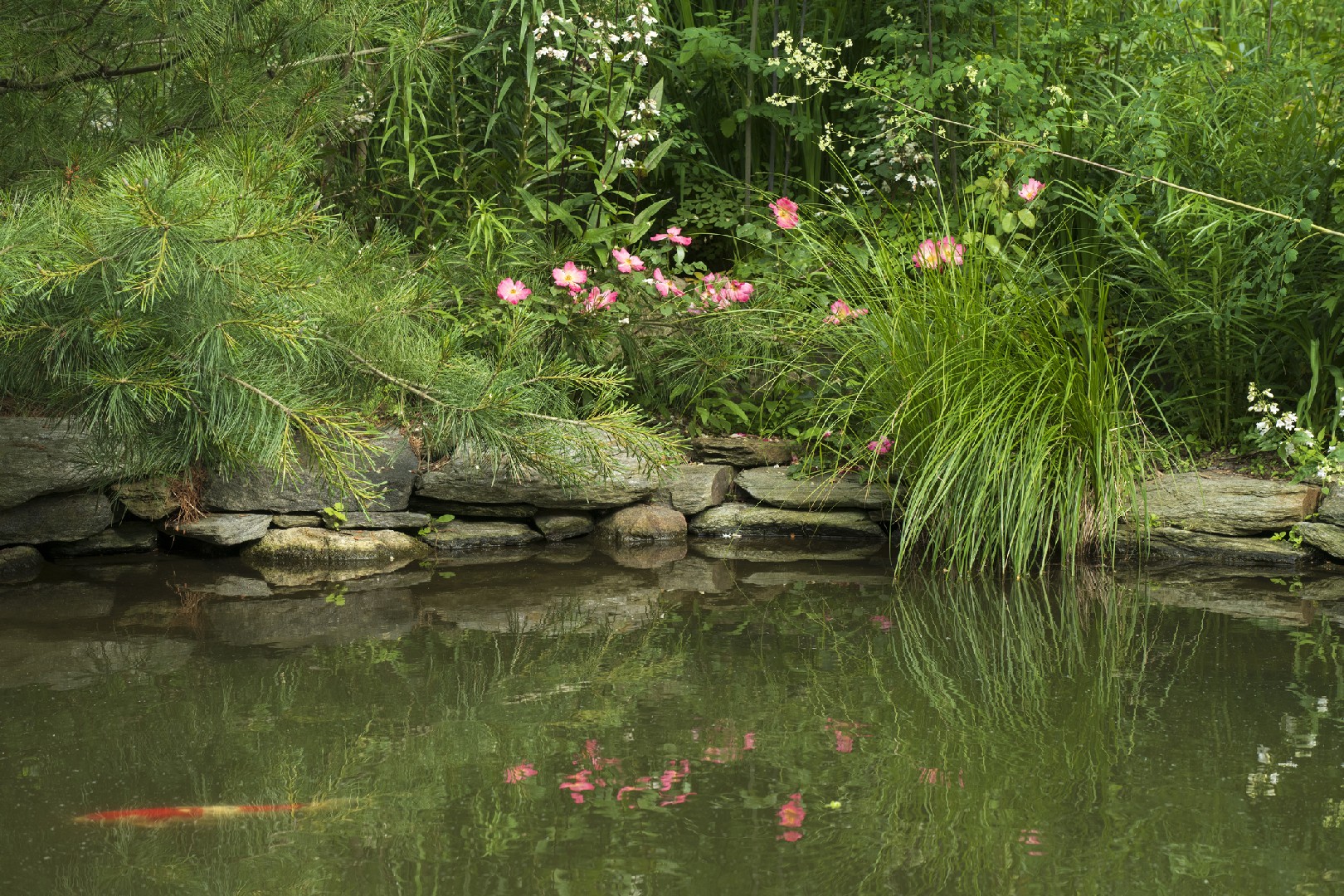![Rectangle]()
Construction and Design of a Koi Pond
When it comes to designing and constructing a stunning and functional koi pond in your garden, there are several key factors to consider. In this section, we will explore the step-by-step process of breaking ground, incorporating aesthetics and complexity, and setting up a healthy ecosystem to ensure the success of your koi pond.
The first step in the construction of a koi pond is breaking ground. This involves carefully selecting the location for your pond and determining the size and shape that will best fit your garden. It is essential to consider factors such as sunlight exposure, nearby trees or structures, and the overall landscape design. Once you have chosen the ideal location, the next step is to dig the pond. Depending on the size and depth, you may need to hire excavation equipment or seek professional help. It is crucial to ensure that the pond is level and properly lined to prevent any leakage or drainage issues.
After breaking ground and excavating the pond, the next aspect to focus on is the aesthetics and complexity of the pond. Adding features like waterfalls, rocks, and bridges not only enhance the visual appeal of the pond but also create a more natural and dynamic environment for your koi. Waterfalls can be incorporated using pumps and a well-designed plumbing system to create a beautiful cascading effect, while strategically placed rocks and boulders can provide hiding spots and a sense of depth. Additionally, bridges can be installed to add a charming touch and allow for easy maintenance and access.
While the visual aspects of a koi pond are essential, it is equally important to set up a healthy ecosystem for your fish. This requires the installation of a filter system to remove debris and maintain water clarity. There are various types of filters available, including mechanical, biological, and UV filters. It is crucial to choose a filtration system that suits the size of your pond and the number of koi you plan to have. Aeration is also crucial for maintaining a healthy pond environment as it provides oxygen to the fish and promotes beneficial bacteria growth. This can be achieved through the use of aerators or air pumps.
In addition to filter systems and aerators, incorporating beneficial bacteria into your koi pond ecosystem is essential. Beneficial bacteria help break down organic waste, reduce ammonia levels, and maintain a balanced and healthy environment for your fish. These bacteria can be introduced through specially formulated products that are available in the market. Regular maintenance and monitoring of water parameters such as pH, ammonia, nitrite, and nitrate levels are also essential to ensure the overall health and well-being of your koi.
By following the step-by-step process of breaking ground, incorporating aesthetics and complexity, and setting up a healthy ecosystem, you can design and construct a stunning and functional koi pond in your garden. Remember to consider the practical tips and insights provided in this section to ensure the long-term success of your koi pond. With proper planning, construction, and maintenance, you can create a tranquil and captivating oasis that will bring joy and serenity to your outdoor space for years to come.





